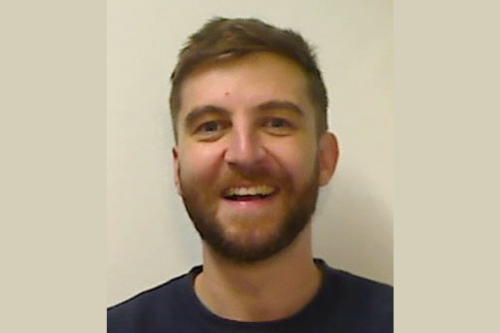Dr. Andrew McCluskey of University of Bristol Awarded the 2024 BTM Willis Prize
The BTM Willis Prize for 2024 has been awarded to Dr Andrew R. McCluskey, a Lecturer in Chemistry at the University of Bristol.
Dr McCluskey was recognised for ‘leadership in advancing neutron reflectometry analysis methods, fostering community standards and collaboration, and educating the next generation of neutron scattering users in data-centric science.’
The BTM Willis Prize is named in honour of Professor Terry Willis – founder of the UK Neutron Scattering Group. The prize is awarded annually to an early career researcher in recognition of a single outstanding piece of work, or a longer-term coherent body of work, in the application of neutron scattering to a significant problem in physics, chemistry, materials science, earth science, the life sciences, or engineering, or alternatively in recognition of a major development in neutron scattering instrumentation or techniques.
Originally from Glasgow, Dr McCluskey enjoyed computing as a teenager, and his family tried to encourage him to study programming as a useful skill to take forward. Instead, a schoolteacher’s recommendation led him to study chemistry at the University of Edinburgh, which included a year in industry in the USA.
Here he focussed on process development, and found that he preferred the final data analysis to being in the lab. He decided to finally learn programming, where he was able to streamline the statistical software his role involved, automating many of his everyday tasks to the point that half of his role was covered by the program he had designed.
Dr McCluskey discovered an interest in using neutron scattering as a potential tool for investigating polymer emulsions and went on to apply for PhDs involving neutrons and X-rays.
He was accepted at the University of Bath for a PhD, which would be co-funded by Diamond Light Source research centre and involve research at ISIS Neutron and Muon Source.
“Throughout my PhD, I was really interested in education and teaching, and I wanted to try and train chemists and fellow scientists about programming and data science”, explained Dr McCluskey. “So, I became more involved in this training at Diamond and ISIS, where data at such large-scale facilities was becoming ever more important. I was lucky that my PhD involved both neutrons and X-rays.”
Dr McCluskey continued to work with Diamond and ISIS, building on his PhD research in reflectivity data analysis. After over a year at Diamond, he became an instrument data scientist at ESS, where he continued to work on reduction, analysis and standardisation in neutron reflectometry.
During this period, he was also afforded the opportunity to lead the PANOSC Work Package on training in computing at the large-scale facilities. After two and a half years in Denmark, Dr McCluskey returned to take up a lectureship at Bristol, which ideally included training chemists about data analysis and programming.
At the University of Bristol, Dr McCluskey has borne in mind how much he wanted to learn programming as an undergraduate. He now teaches and has helped to set up new training in programming and data analysis for both the undergraduate and postgraduate programmes, including the new MSc program in Scientific Computing with Data Science, so the students he teaches now can learn the skills he always wanted to learn.
Dr McCluskey also leads a research group, SCAMs (Statistical Chemical Analysis Methods), at Bristol and has continued his work on neutron reflectivity analysis and is a visiting scientist at Diamond. One of his research goals is to try and take some of the analysis tools that have been developed for neutrons and X-ray scattering and see if they can be applied in other areas of chemistry, taking advantage of these approaches across different analyses.
“It’s about bringing in new methods, such as Bayesian analysis, and not only trying to get the most out of data that we collect”, says Dr McCluskey, “but also moving towards having standards in our measurements, so we can get the most out of our data. This way, when we return to the data in, say 10 years, we can still work with it. Importantly, we want to ensure that we are storing the data so when we come back with new methods, we can take advantage of the analysis rather than regretting that we didn’t do something with data that we didn’t keep.”

